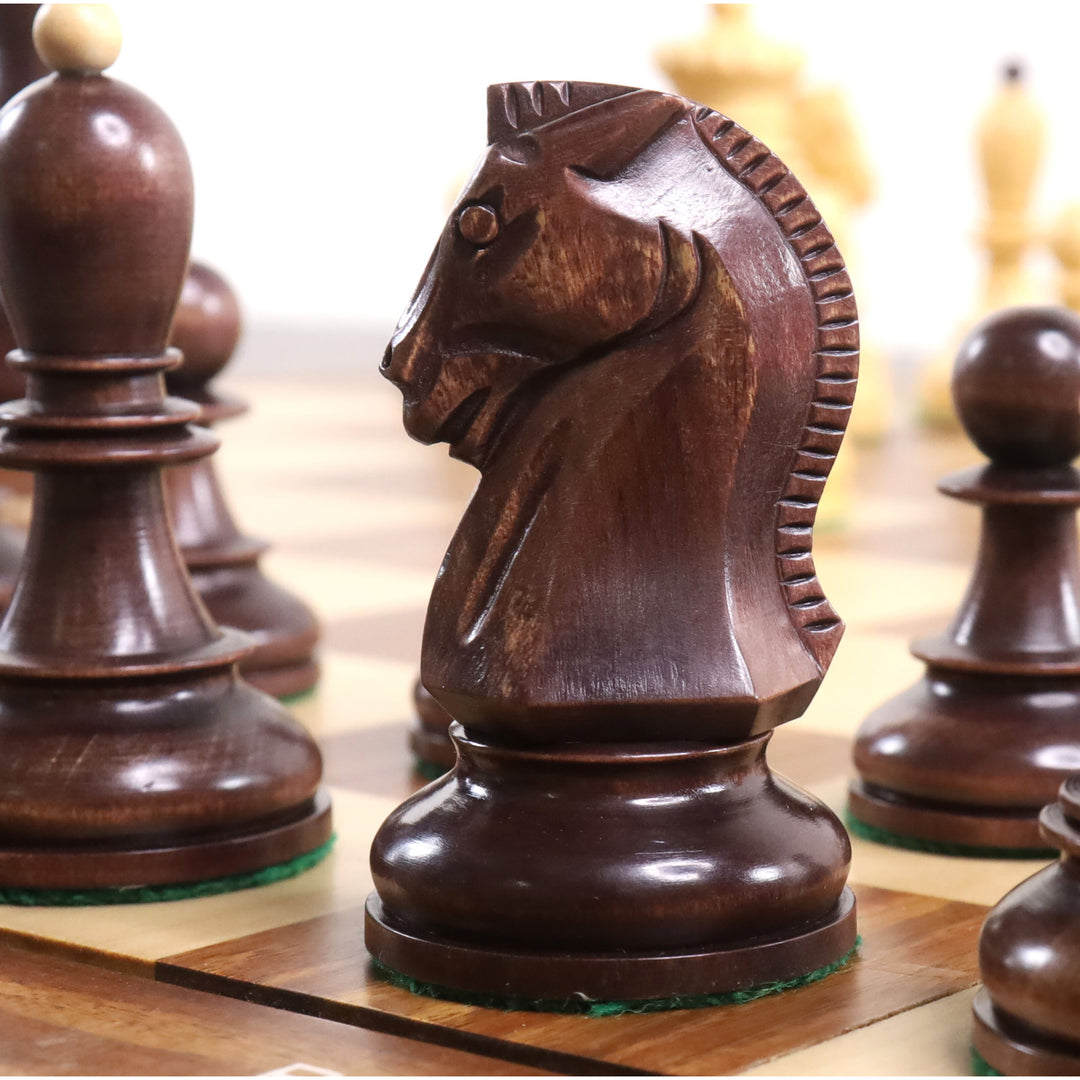The Evans Gambit is not merely an opening; it's a strategic statement, embodying the ethos of aggressive chess. By sacrificing a pawn early on, White aims to disrupt Black's plans, seize control of the centre, and dictate the tempo of the game. This comprehensive guide serves as a roadmap, tracing the evolution of the Evans Gambit from its inception to its modern-day applications. From exploring its historical origins to dissecting its myriad variations, advantages, and disadvantages, players of all levels will gain invaluable insights into the complexities of this dynamic opening. Whether you're a novice seeking to expand your repertoire or a seasoned player aiming to refine your tactical acumen, this guide equips you with the knowledge and understanding needed to wield the Evans Gambit effectively on the chessboard.
History of The Evans Gambit
The Evans Gambit traces its origins back to the 19th century, named after the Welsh sea captain William Davies Evans, who popularized the opening in the 1820s. Evans introduced the gambit as a surprise weapon against the established Italian Game, aiming to disrupt Black's pawn structure and create active piece play on the kingside.
The gambit gained widespread attention after Evans showcased its effectiveness in several high-profile matches, including his encounter with the renowned German chess master Ludwig Bledow in 1827. Evans's bold sacrificial play and dynamic style left a lasting impression on the chess world, sparking interest in the gambit among players eager to emulate his aggressive approach. Today, the Evans Gambit remains a potent weapon in the arsenal of players seeking dynamic and enterprising play, embodying the spirit of creative aggression that has defined chess for centuries.
Check Now: Everything You Need To Know About King's Gambit
Understanding the Evans Gambit
The Evans Gambit is like a surprise attack that catches your opponent off guard and gives you a head start in the game. It's a bold and aggressive strategy that can lead to exciting and dynamic play, making it a favourite among players who love to take risks and go for the win. At its core, the Evans Gambit arises after the moves 1.e4 e5 2.Nf3 Nc6 3.Bc4 Bc5 4.b4, where White sacrifices a pawn to gain rapid development and control over the centre. By offering the b4 pawn as bait, White aims to open lines for their pieces, target Black's vulnerable f7 square, and launch aggressive attacks against the black king.
So, instead of just moving your pieces around, you decide to sacrifice one of your pawns early on to gain an advantage. Let’s decode the variations of the Evans Gambit to understand how -
Variations of the Evans Gambit
The Evans Gambit offers a rich tapestry of variations, each with its own strategic nuances and tactical possibilities.
1) Mainline Evans Gambit (e4 e5, Nf3 Nc6, Bc4 Bc5, b4)
In this variation, Black accepts the gambit by capturing the b4 pawn, leading to sharp and dynamic play with rapid development for both sides. This is where White sacrifices a pawn with 4. b4 in exchange for rapid development and attacking chances. In the mainline, Black accepts the gambit with 4...Bxb4, leading to dynamic and tactical positions. White typically follows up with moves like c3, d4, Nc3, and possibly Qb3, aiming to maintain pressure and exploit the lead in development.

2) Accepted Evans Gambit (e4 e5, Nf3 Nc6, Bc4 Bc5, b4 Bxb4)
Black chooses to decline the gambit by avoiding the capture of the b4 pawn, opting for a more solid but passive position. Which means, White sacrifices a pawn with 4. b4, and Black accepts it by capturing the pawn on b4 with the bishop. This leads to sharp and tactical play, with White typically continuing with moves like c3, d4, Nc3, and possibly Qb3 to pressure Black's position and exploit the lead in development.
3) Declined Evans Gambit (e4 e5, Nf3 Nc6, Bc4 Bc5, b4)
The Declined Evans Gambit occurs when Black declines to accept the gambit pawn offered by White in the Evans Gambit opening, aiming to counter White's aggressive intentions while preserving their pawn structure. Instead of capturing the pawn on b4 with the bishop, Black chooses not to accept the gambit and typically plays a move like 4...Bb6 or 4...Be7. By declining the gambit, Black aims to avoid complications and maintain a solid pawn structure, sacrificing some dynamic potential for stability.
4) Göring Gambit (e4 e5, Nf3 Nc6, d4 exd4, c3)
Named after German chess master Carl Jaenisch, this variation involves sacrificing the f2 pawn instead of the b4 pawn, leading to complex and tactical battles. Here, White sacrifices a pawn with 4. c3 to accelerate development and create tactical opportunities. Black can accept the gambit with 4...dxc3 or decline it with moves like 4...Nf6. Accepting the gambit leads to sharp, dynamic positions where White aims to exploit Black's exposed king and lead in development.
5) Stone-Ware Defence (e4 e5, Nf3 Nc6, Bc4 Bc5, b4 Bxb4, c3 Ba5)
A lesser known but intriguing defence for Black, aiming to maintain a solid pawn structure and neutralize White's attacking chances. In this, Black delays castling and opts for a solid setup with Ba5, avoiding immediate exchanges and aiming to control the center. While this defense is not as common as other responses, it can lead to interesting and unbalanced positions where both sides have chances.
Advantages and Disadvantages of the Evans Gambit
The Evans Gambit stands as one of the most provocative and daring openings in chess theory. Stemming from the Italian Game, it unfolds with a pawn sacrifice on move four, igniting tactical fireworks right from the outset. While celebrated for its aggressive nature and potential for rapid development, the Evans Gambit also carries inherent risks and drawbacks that players must carefully weigh. In this exploration, we delve into the advantages and disadvantages of this time-honored gambit, shedding light on its strategic nuances and offering insights into how both sides can navigate the complexities it presents. Whether you're a fervent advocate or a cautious skeptic, understanding the intricacies of the Evans Gambit can enrich your chess repertoire and enhance your appreciation for the game's rich tapestry of possibilities.
Advantages
Rapid Development: The Evans Gambit allows White to quickly mobilize their pieces and seize control of the centre, putting pressure on Black from the outset.
Initiative: By sacrificing a pawn, White gains the initiative and dictates the flow of the game, forcing Black to react to White's aggressive intentions.
Open Lines: The gambit opens lines for White's pieces, particularly the bishops and queen, enabling them to target Black's weak points and launch powerful attacks.
Disadvantages
- Counterattack Opportunities for Black: By sacrificing a pawn, White offers Black opportunities to counterattack and exploit weaknesses in White's position, particularly along the diagonal leading to the f2 square.
- Complexity: The Evans Gambit leads to sharp and complex positions, requiring precise calculation and deep understanding of tactical motifs to navigate successfully.
- Variation Knowledge: Mastery of the Evans Gambit requires familiarity with numerous variations and sub-variations, demanding dedicated study and preparation from players.
Famous Games Using the Evan’s Gambit
Throughout chess history, the Evans Gambit has been employed by numerous renowned players to score spectacular victories and showcase its attacking potential. One of the most famous games featuring the Evans Gambit is the Immortal Game played between Adolf Anderssen and Lionel Kieseritzky in 1851, where Anderssen unleashed a devastating sacrificial attack to secure victory.
Is the Evans Gambit Good for Beginners or Intermediates?
The Evans Gambit is a double-edged sword that can yield spectacular results for players who understand its intricacies and are comfortable with aggressive play. While beginners may struggle to handle the complexity and tactical demands of the opening, intermediates seeking to expand their repertoire and sharpen their attacking skills can benefit from studying the Evans Gambit under the guidance of experienced players and thorough analysis.
Check Now: Master the Game with 5 Best Chess Gambits for Beginners
Conclusion
In conclusion, the Evans Gambit stands as a dynamic and captivating opening that embodies the spirit of aggressive chess. With its rich history, diverse variations, and strategic complexities, the Evans Gambit offers players an opportunity to unleash creative attacks and outmaneuver opponents on the battlefield. Whether embraced as a surprise weapon or studied as a cornerstone of one's repertoire, the Evans Gambit continues to intrigue and inspire players of all levels with its tactical fireworks and uncompromising spirit.

























